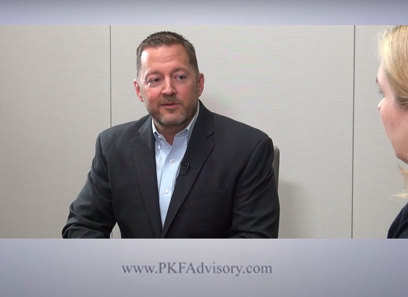Expert Insights on Understanding PPA Allocation
The Critical Duty of Comprehending Purchase Price Allocation in Mergers and Acquisitions Explained
The process of Purchase Price Allocation (PPA) plays a crucial function in the landscape of mergers and procurements, influencing not only financial coverage but additionally tax strategies and stakeholder assumptions. A nuanced understanding of PPA can significantly influence an obtaining firm's monetary health, making its precise implementation necessary for long-lasting success. Purchase Price Allocation. The complexities involved in valuing identifiable properties and responsibilities frequently lead to difficulties that organizations have to navigate very carefully. As we discover the intricacies of PPA, it ends up being noticeable that the stakes are high, raising important questions about finest techniques and conformity standards.
Meaning of Purchase Price Allocation
Acquisition cost allowance (PPA) is an essential procedure in mergings and procurements that entails dispersing the total purchase price amongst the numerous recognizable properties and responsibilities obtained in a purchase. This allocation is important for accurately reflecting the reasonable worth of the obtained entity's possessions and obligations on the annual report of the acquiring firm.
The PPA procedure normally starts with the identification of all tangible and abstract possessions, in addition to any liabilities thought throughout the acquisition. Tangible properties may include home, equipment, and stock, while intangible assets usually include trademarks, licenses, and goodwill. Each asset and responsibility should be measured and valued to make certain that the allowance reflects their reasonable market price at the procurement day.
The resulting allowance impacts monetary coverage and can influence future incomes through amortization and depreciation of abstract assets. Furthermore, exact PPA is essential for conformity with accounting requirements, such as International Financial Coverage Standards (IFRS) and Typically Accepted Audit Principles (GAAP) As a result, a well-executed PPA procedure is basic to providing stakeholders with a clear monetary image of the purchase's impact.
Value of Accurate Evaluation
Exact valuation is critical in the purchase cost allowance procedure, as it straight influences the monetary health and wellness and reporting of the obtaining business. An inaccurate assessment can bring about substantial misstatements in economic declarations, influencing stakeholder assumptions and possibly leading to regulative examination. Appropriate appraisal makes sure that the possessions and obligations acquired during a merging or procurement are videotaped at reasonable value, which is vital for precise financial reporting.
Furthermore, specific valuation help in recognizing the a good reputation created from the deal, which is vital for future disability testing. Stakeholders, consisting of capitalists and analysts, count on the precision of these numbers to evaluate the company's efficiency and make notified decisions. Inaccurate evaluations may result in paying too much for a purchase, resulting in diminished returns and an absence of depend on from investors.
In addition, the combination process depends on accurate evaluations to successfully assign sources and manage the freshly integrated entity. Inevitably, the value of accurate assessment in purchase cost allocation can not be overemphasized; it lays the foundation for transparency, functional efficiency, and lasting tactical success within the joined organization.
Tax Effects of PPA
In mergers and procurements, understanding the tax effects of purchase cost allocation (PPA) is vital for both the getting company and the target entity. PPA figures out how the overall acquisition rate is distributed among numerous assets and obligations, which dramatically affects the tax responsibilities of both events involved.
The allotment straight influences the tax obligation deductibility of intangible and tangible possessions. For circumstances, allocating a greater part of the purchase cost to depreciable or amortizable properties can this generate substantial tax benefits, enabling the obtaining business to recoup prices with time through depreciation or amortization deductions. On the other hand, assigning way too much to goodwill, which is not amortizable for tax purposes, may lead to greater taxed revenue in the future.
In addition, the therapy of any type of pre-acquisition obligations can influence the tax effects for both events. Misallocation or misconception of these possessions can lead to unexpected tax obligation responsibilities, audits, or fines. As a result, carrying out an extensive analysis of tax implications during the PPA procedure is important to enhance financial end results and make sure compliance with check my blog applicable tax obligation legislations. A critical technique to PPA can ultimately boost the overall worth originated from a merging or purchase.
Conformity With Financial Standards

Entities included in M&An activities should carefully assess the fair value of recognizable abstract possessions, concrete assets, and liabilities related to the gotten entity. This analysis needs to be based in robust methodologies, such as market, income, or price techniques, making sure that the allotments reflect the financial truth of the transaction.

Best Practices for PPA Application
Effectively browsing the purchase price allotment (PPA) procedure calls for the implementation of best methods that enhance evaluation and enhance accuracy. One vital technique is involving experienced valuation experts who are skilled in both monetary and functional facets of the target firm. Their proficiency is important for figuring out reasonable worths for recognizable possessions and obligations.
One more finest method includes complete due persistance. Accumulating detailed information on the target's possessions, obligations, and operational metrics permits a more accurate allotment of purchase price. In addition, developing a durable framework for evaluating intangible properties, such as brand name worth and client relationships, is important to make certain that all appropriate aspects are thought about.
Integrating reliable interaction among stakeholders, including money, lawful, and operational groups, can additionally improve the PPA process. Normal updates and collective discussions facilitate a common understanding of appraisal methodologies and presumptions.
Finally, maintaining documents of the reasoning behind valuations and appropriations is vital. This not only help in compliance with accounting requirements but additionally functions as a reference for future audits or conflicts. By adhering to these ideal practices, companies can accomplish a more accurate and reliable PPA process.

Verdict
To conclude, recognizing purchase cost appropriation is vital in mergings and procurements, as it directly affects economic coverage, tax responsibilities, and assimilation strategies. Accurate assessment makes certain compliance with financial requirements such as GAAP and IFRS, cultivating trust fund among stakeholders. Executing finest methods in PPA not just boosts the economic health of the acquiring company however likewise adds to effective purchase end results. Hence, a comprehensive approach to PPA is important for efficient administration of M&An activities.